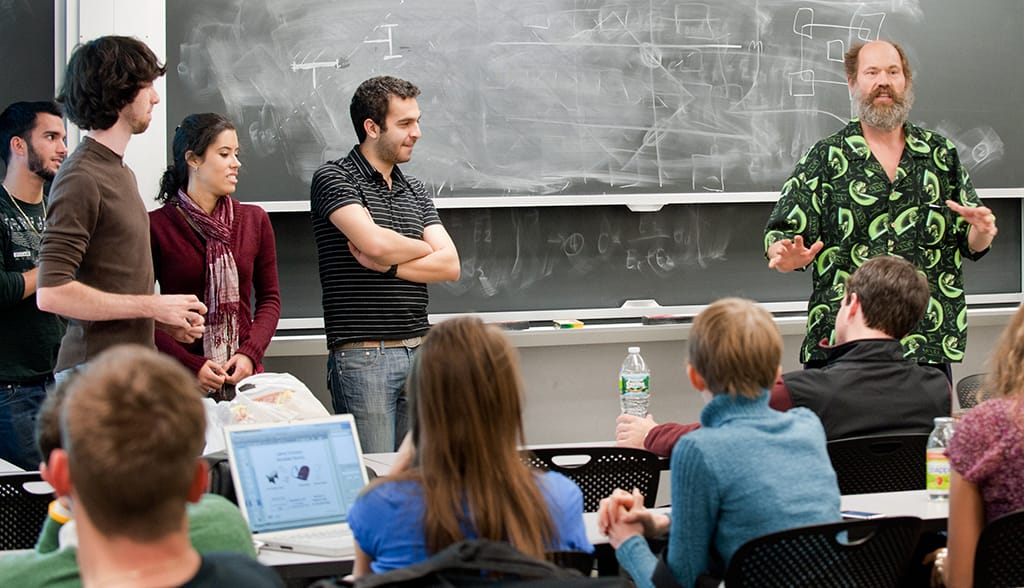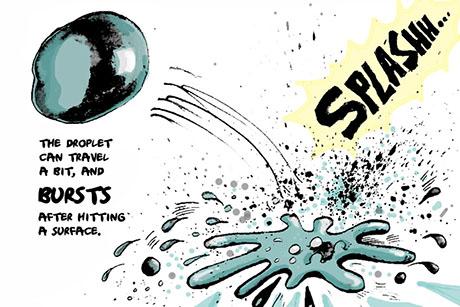2.75: Precision Machine Design
In MechE, Theory is Just the Beginning
Just one minute with Professor Alexander Slocum and you can see why his course 2.75 is so popular – and successful. He has a way of inciting passion and excitement in his students while imbuing them with the confidence (and intellectual and practical tools) to meet whatever challenge he’s presented.
In the case of Precision Machine Design, Course 2.75, the challenge is to create an innovative new medical device to the specifications of a client with a current problem.
Professor Slocum has been guiding senior undergraduates as well as graduate students through this process since 2004, when he founded the class on the famous MIT credo “mens et manus,” meaning “mind and hand.” His purpose was to take the deep fundamental understanding of mechanical engineering that the students already possess and add real-world experience and deterministic design philosophy that engineering students at other schools often don’t get – and then top it off with one of the most eccentric professors around.
“There’s no extraneous theory here,” says Slocum, the Pappalardo Professor of Mechanical Engineering and recipient of the 2000 Massachusetts Professor of the Year Award. “It’s all hands-on and brains-on. It’s a perfect class for me to teach because I’m wild and hyper, and with about 10 projects going all at once involving about 30 to 50 kids, that’s what you need – you have to be all over the map instantaneously. I couldn’t imagine teaching a regular class out of a textbook.”
The 14-week course centers around a major project that matches teams of students with Boston-area clinicians. It’s a win-win situation because the clinicians, who begin the process working with the class’s partner, the Center for Integration of Medicine and Innovative Technology (CIMIT), gain willing and passionate partners with the engineering background to solve their particular medical problem – often receiving several viable solutions – and the students, who already have a high-level understanding of the underlying mechanics, have a chance to experience the process of product development in a real situation. They work for a real client, on a team with fellow classmates, following a real-world deterministic process step by step, from brainstorming and designing a proof-of-concept device, to building the hardware and developing and testing a prototype – all along the way being constantly challenged by Slocum to identify risks and viable countermeasures to design and production ideas.
“Pitching clinical challenges to bright and enthusiastic engineering students resulted in several home runs for me,” says Dr. Matt Bianchi, who presented his problem to last year’s class, “including the good fortune of working with a team of three students to go from concept, to prototype, to bench testing, to laboratory testing, to patent application in just a few months. What an amazing opportunity, and the fruits of this collaborative work continues to drive my clinical research.”
Course 2.75 is similar to the undergraduate 2.009 course, taught by Professor David Wallace with equal success, with a few important distinctions. Both courses incorporate communication, professionalism, and hands-on development, but 2.75 is the direct response to a real-time problem of a medical professional. “In a way,” says Slocum, “2.75 starts where 2.009 leaves off. I’m much more concerned with the analysis and hardware needed to solve a given problem, rather than with the design process that involves identifying a problem. 2.75 is very much along the lines of ‘Here’s what the customer wants, now figure out how to do it.’”
Each team of students has a budget of $5,000, provided by course sponsors, and a fixed period of time to complete the project. They have to learn to communicate their ideas and plans professionally, both to a team as well as to the client, without going over time or over budget. According to Slocum, by the end of this class, students should be able to provide a prospective employer with the same level of value as a typical employee with several years of experience.
But why is that real-world project management experience such an important part of a mechanical engineer’s education? Isn’t the science enough?
“At MIT, we teach really great engineering science, machine elements, and introduction to design,” says Slocum, “but we really needed a class that melded the engineering science with practical application. We needed to teach students how to actually make machines work and last a long time. Anybody can put Legos together and say, ‘Ooh, look at this cool thing.’ But the questions is, ‘Will it work in 1 year, 2 years, 10 years?’ How do you design a medical device to achieve not only the function, but, just as importantly, to be robust and durable?”
One look at the list of devices and start-up companies that have spun off from the work done by students in 2.75, and it’s easy to see that Slocum’s plan works. For example, in 2004, Robopsy(TM), a robotic device to assist radiologists during tumor biopsies, won the 2007 $100K Entrepreneurship Competition and the first-place award at the 2008 ASME Innovation Showcase. This year, a team of students who created the Somnus(TM) Sleep Shirt, a snug-fitting, washable shirt with embedded capacitive displacement sensors that monitor patient respiration, a detachable electronics package, and a custom online interface and algorithm that automates sleep “scoring,” won a prize at the prestigious Three-in-Five Competition at this year’s Design of Medical Devices Conference. They recently began a startup called Nyx Devices based on their invention, securing $500,000 in financing this past summer.
There are many more success stories where those came from, and, we suspect, there will be many more in the future as well.



